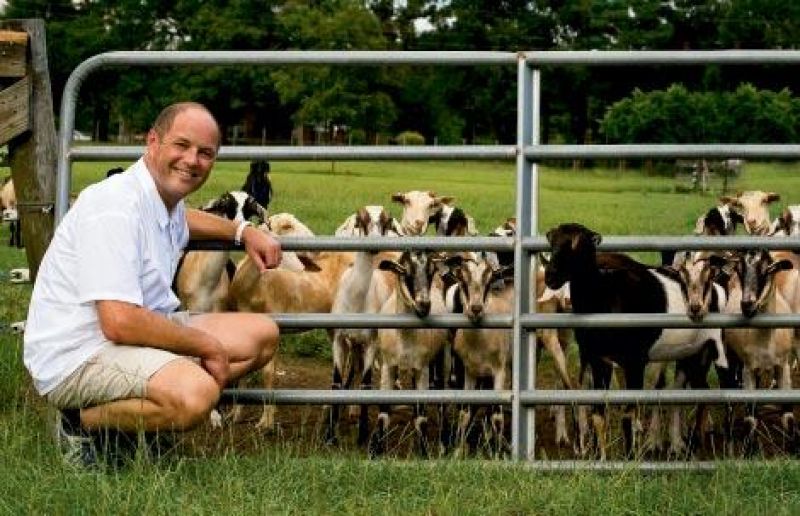
In case you haven’t noticed, goat is trending, and it’s not just an ethnic restaurant thing any more. An easy-to-raise staple of many cuisines and the most widely consumed meat worldwide, goat is high in protein and low in fat, making it a meaty choice for health-conscious consumers. “Goat also takes far fewer resources to produce than beef or pork,” says Robert Stehling, chef/owner of Hominy Grill, who is doing his part to bring goat to Lowcountry tables.
“It’s leaner than pork—the other white meat—but goats are usually well fed and plenty fat, nothing like venison. Your first thought is that it will taste like lamb, but it’s much more mild and delicate—probably closer to beef.” Stehling shares his process for whole-animal use, the best way to purchase goat. “We start with the prime cuts—steaks and chops for the grill—then move to the rear quarter, where we can get cuts to grill or braise. We usually smoke the shoulder. The rest is cut and trimmed for stew or ground for sausage.” Don’t be intimidated, he advises. Goat “mostly cooks like beef: overcook it and it will be dry, undercook it and it will be chewy.”
Stehling’s curried goat is a good gateway dish for those whose only familiarity with the animal has been through cheese. Replete with spices and vegetables, it’s a “sweet curry stew made in a traditional Charleston style.” Similar to cooked lamb, his grilled leg of goat calls for lots of fresh herbs and garlic. “Smoke and char it,” he advises, “to really give it the meaty flavor.” His goat meatballs with lentils and coconut Hoppin’ John reflect a more ethnic rendition with “flavors from two of the world’s regions that consume the most goat—the desert and the tropics.”
Frequently serving the meat in the colder months, Stehling buys his goats “from different purveyors out of Atlanta or North Carolina, but mostly from Heritage Foods USA in New York,” whose No Goat Left Behind project is a serious effort to provide a sustainable end market for dairy animals. Locally, whole live goats are available from Burden Creek Farms, a goat cheese dairy on John’s Island. From there, Burbage’s Meats in Hollywood will slaughter and butcher the animal. To buy cuts, order from Ted’s Butcherblock a week in advance of your meal.
The Scoop: Dishing it up with Chef Robert Stehling
Restaurant: Hominy Grill
Accolades: James Beard Best Chef Southeast 2008
First F&B Gig: Dishwasher at Crook’s Corner in Chapel Hill, which was given a 2011 American Classic award by the James Beard Foundation
Education: Bachelor of Arts at UNC Chapel Hill
Favorite Local Ingredient: Shrimp
Recipe He'll Take To The Grave: “Beet mustard —no one wants it!”